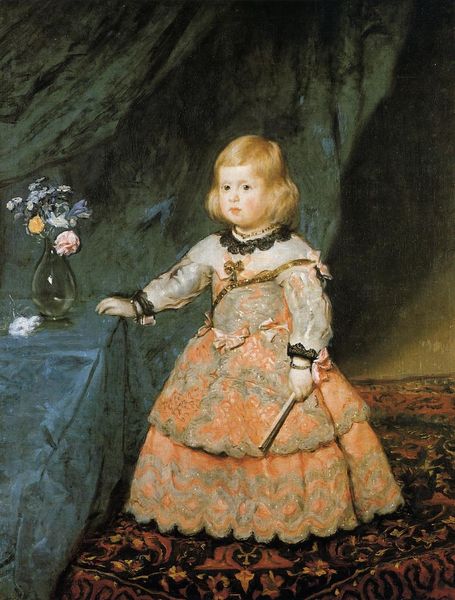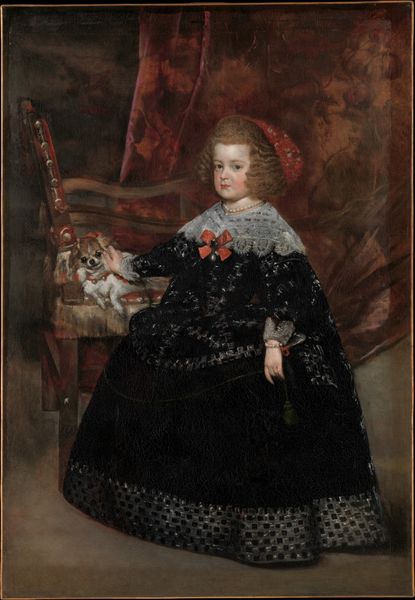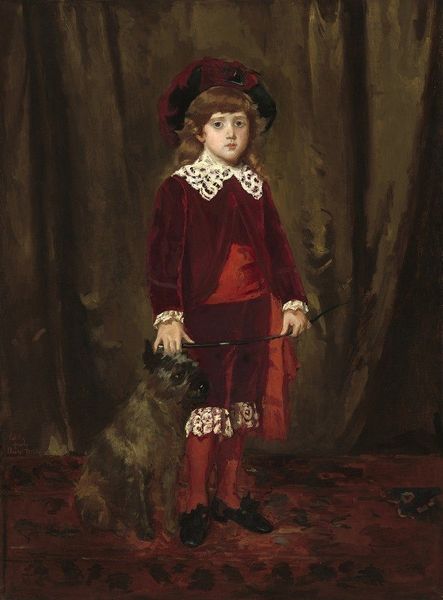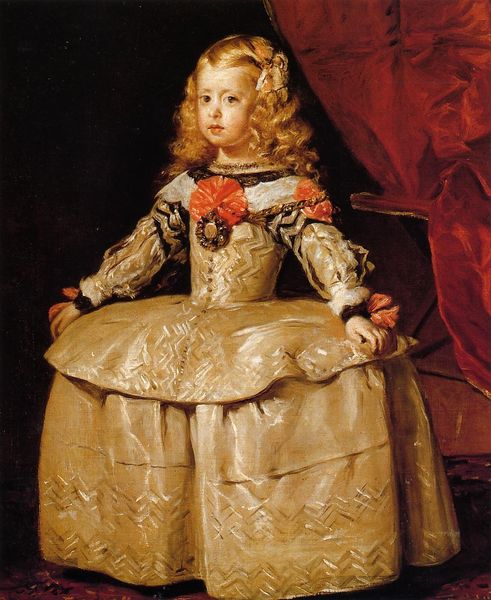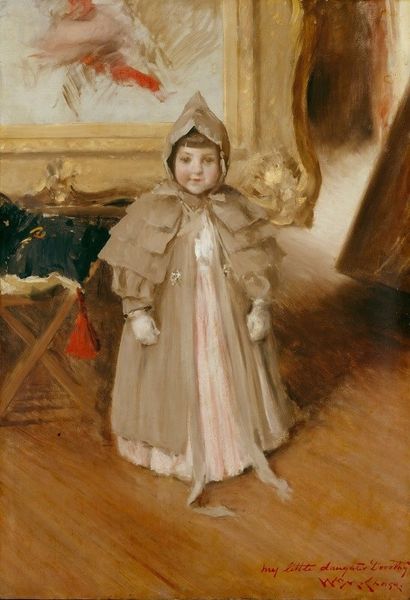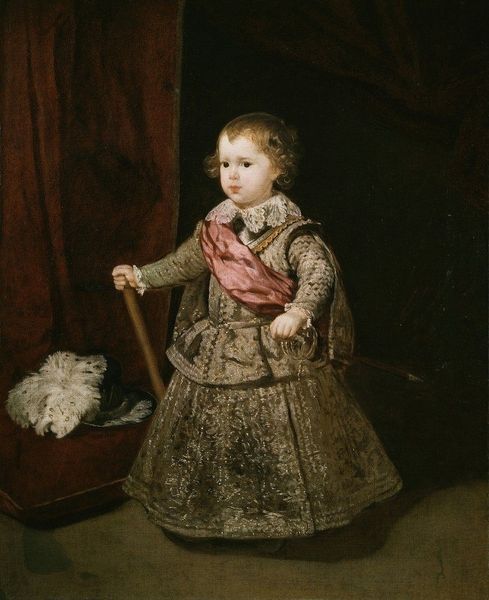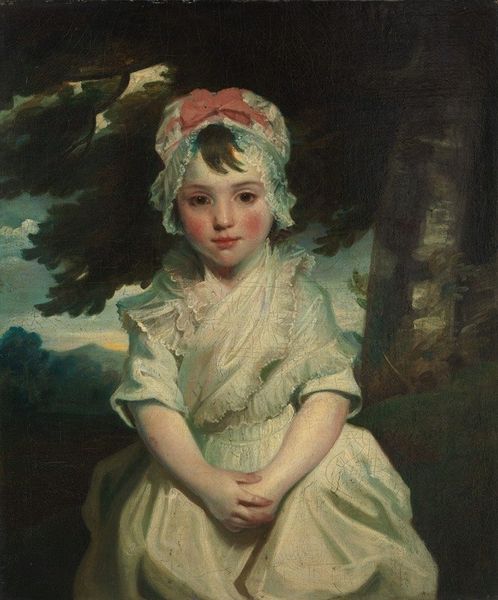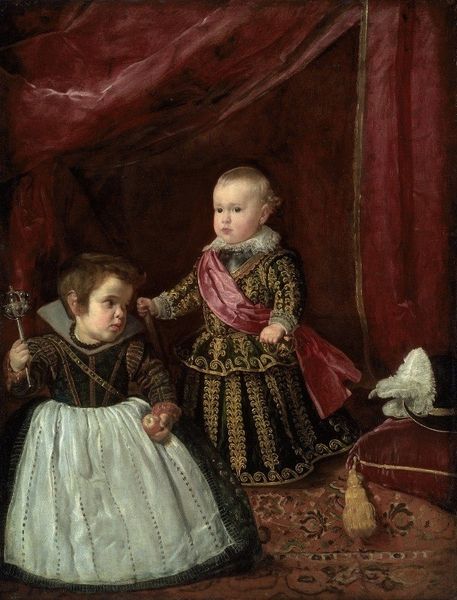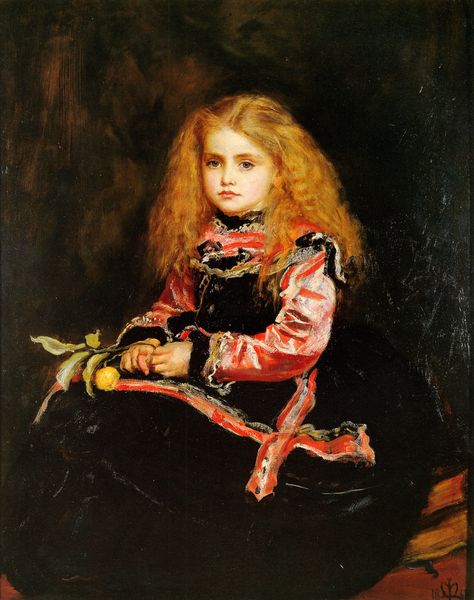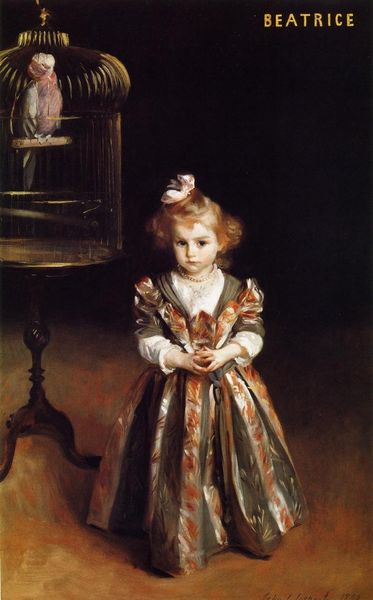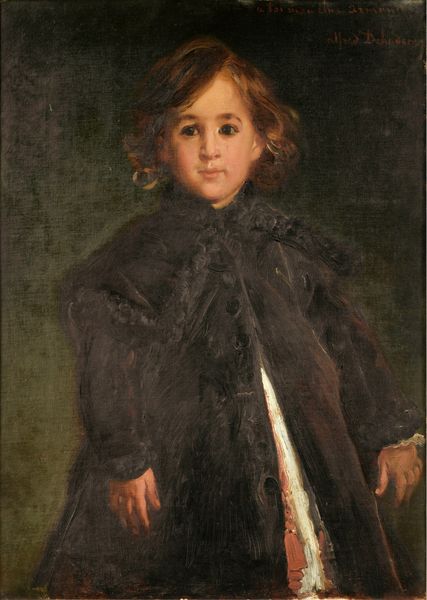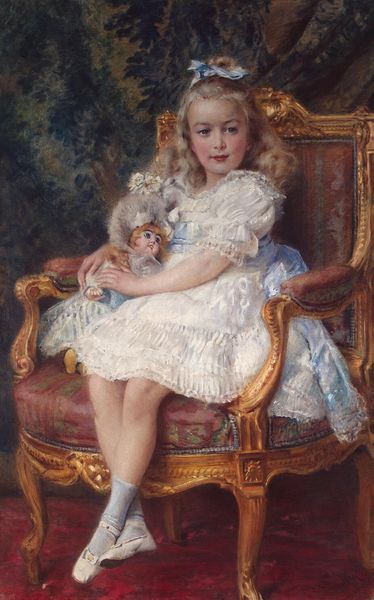
Copyright: Public Domain: Artvee
Helene Schjerfbeck painted this copy after Velázquez’s portrait of Infanta Maria Teresia. Note how the child’s posture echoes the formal conventions of royal portraiture. The fan she holds is not just a fashion accessory, but a symbol of power and status. This recalls the scepters and orbs held by rulers in earlier eras. Consider the evolution of such emblems. In ancient Rome, the scepter was a sign of military command, later transforming into a symbol of divine right during the medieval period. Yet, here, in the hands of a child, the fan seems almost comically oversized. Is this a conscious critique by Schjerfbeck, or merely an observation of the burdens placed upon royalty from a young age? Such gestures and symbols resonate deeply within our collective memory, evoking complex emotions tied to authority and innocence. The image reminds us that these symbols are not static; they are constantly reinterpreted and imbued with new meanings. The persistence and adaptation of these visual cues across centuries is a testament to their profound psychological impact.
Comments
No comments
Be the first to comment and join the conversation on the ultimate creative platform.
